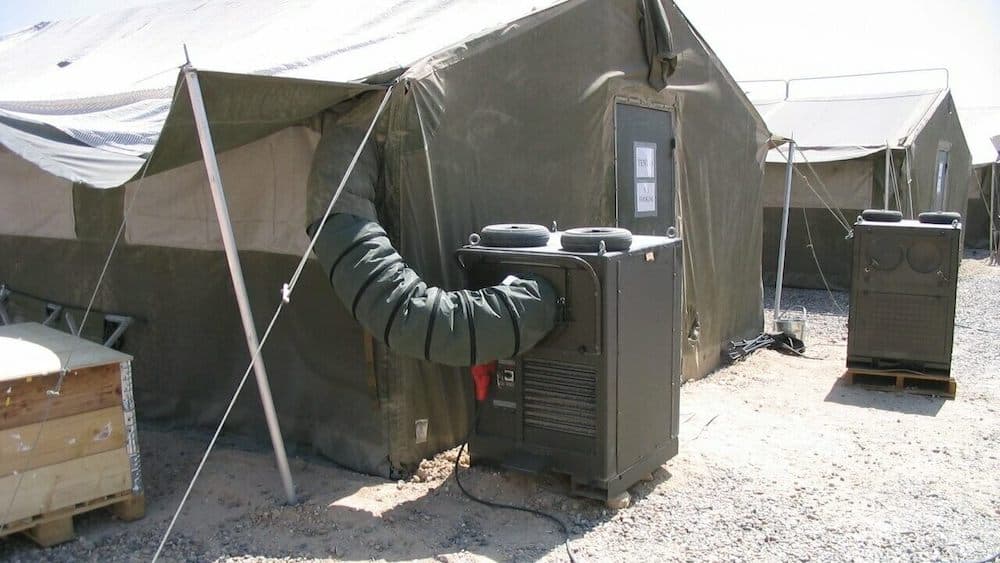In this article, Dantherm explains why fluctuating temperatures can alter the success of military and humanitarian aid operations, and how air cooling technology can be used to create safe living and working environments in extreme climate conditions.
Both humanitarian aid organizations and the military respond to crisis situations across different countries, regions and climate zones. From the deserts of North Africa and the Middle East to the mountains of South America, the jungles of Southeast Asia and the Arctic areas of Scandinavia, climate control has to be an integral part of the camps and field hospitals that support refugees, patients and personnel.
The dangers of extreme temperatures
While tents and temporary structures will protect people from the elements up to a point, in extreme environments like deserts, heat can be trapped inside. When heat is this severe, installing fans will simply move hot air around a space and provide no relief whatsoever.
The humanitarian crisis across the Middle East is ongoing, with temporary shelters becoming long-term accommodation for people escaping conflict. In some of the worst affected areas, climate change and desert heatwaves have been directly linked to serious illness, food spoilage and unsanitary living conditions.
One of the major challenges for climate control is that these environments often have incredibly dry atmospheres. This means that temperatures can change drastically between day, night, summer and winter, as the low humidity levels allow heat to escape from the air more quickly. In Syria for example, where approximately 12 million people are in need of humanitarian assistance, daytime temperatures can reach up to 45°C in the summer and drop below zero with regular snowfall during winter.
That’s why NGOs and the military rely on NATO-approved climate control solutions that can be quickly transported into emergency situations and installed with minimal disruption. To be fit for purpose, the climate control units brought into these environments have to be versatile, portable and built to endure harsh conditions. They are commonly used to regulate temperatures in:
- Communication centers
- Field hospitals
- Military camps
- Relief camps
- Tents and temporary buildings
Why NGOs and the military rely on Dantherm
More than 30,000 Dantherm mobile cooling, heating and drying units have been deployed in military and humanitarian operations over the last 35 years. Produced at our facilities in Denmark and tested both on-site and in the field, our units are NATO approved and built to comply with advanced AQAP requirements, as well as the ISO 9001 and 14001 standards (the international requirements for an effective environmental management system).
Because every camp or field hospital has its own unique requirements, we work with tent and container suppliers to devise site-specific, customizable solutions built to:
- Operate at temperatures ranging from -40°C to +60°C
- Minimize logistical costs
- Require minimal maintenance
- Integrate cooling and heating systems
- Maximize energy efficiency
To stay up-to-date with military and humanitarian projects as they develop across the globe, our research and development team make frequent visits to camps and field hospitals currently using Dantherm technology.
To discuss your climate control challenges, learn more about the systems available, or for support and extensive training courses, don’t hesitate to get in touch.










